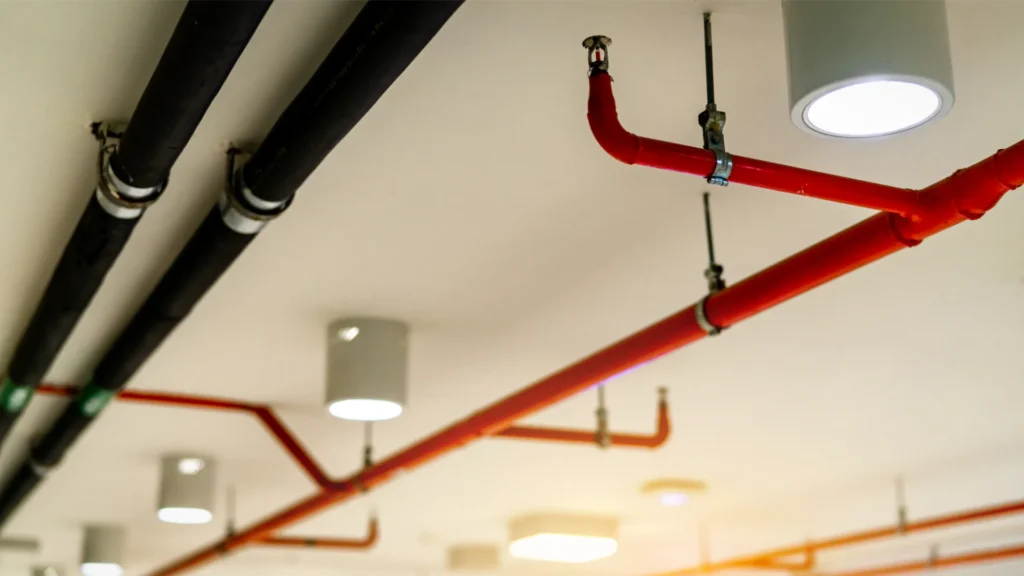Fire safety in Sydney is not simply a matter of ticking off the boxes for compliance. At the heart of the process is the Annual Fire Safety Statement (AFSS) the document that does more than meet the legal requirements, but also shows a building owner’s commitment to security and accountability. The annual Fire Safety Statement (AFSS) is the foundation of the system. It does not only meet legal requirements, it is also a sign of a building’s dedication to safety and accountability.
Why the Annual Fire Safety Statement Exists
The Annual Fire Safety Statement Sydney requirement was never designed to be a formality for the sake of completing paperwork. The requirement was formulated because no matter how great the fire protection system built, it will only function if it’s regularly maintained, tested and certified. A sprinkler set up ten years ago might seem fine but without an inspection, there’s no way to guarantee that it will work in an emergency.

The AFSS insists that property owners show annually, every twelve months, that all fire safety measures in their property–from alarms and hydrants, to exit lighting–can still perform to the standards initially set in the Building Code of Australia (BCA). It’s more than an inspection. It’s a public declaration that lives will be safeguarded and that the structure is capable of surviving in the event of a catastrophic fire.
What’s the difference between AFSS and Fire Safety Certificates?
The Fire Safety Certificate and the Annual Statement are often misunderstood by property owners, yet they serve distinct purposes. The certificate is issued after a system has been put in place or major improvements have been made. It is a proof that the new measures meet regulations before an apartment or tenancy building can be utilized. The AFSS, on the other is a different matter. It’s a responsibility that is repeated that proves the same systems are able to meet the standards each year following the installation.
Together, they form a protective cycle: certificates confirm that the safety systems were installed correctly while annual statements verify that the safety systems have been maintained for the life of the building. In the event of a failure to follow either of the steps can break the whole chain.
The Responsibilities owed to Building Owners
One of the most distinctive aspects of the AFSS process in New South Wales is that it puts the ultimate responsibility on the property owner. The AFSS process is different from other compliance systems that allow defects to be classified into major and minor. Even if a particular measure does not work, the whole statement is ineffective.
Owners have to be proactive. Owners must meet the strict deadlines to schedule inspections, involving accredited professionals, arranging repairs and submitting documents to the council. For strata and commercial landlords, this means that they must coordinate with each other. committees, this responsibility also includes coordinating between tenants, contractors, and insurers. This structure, although difficult however, is designed to make sure that safety isn’t affected or delayed.
The impact of AFSS on Sydney
The AFSS isn’t only regarding legal compliance. It has far-reaching implications. Tenants frequently inquire about a building’s current safety statement when deciding whether to lease space, and insurers frequently require a copy before finalizing coverage. A regular fire safety report that is up-to-date can affect the worth of a building as well as the confidence of tenants and insurance rates.
For councils, it provides security that ensures that all buildings across Sydney are regularly monitored. This means that the fire department are more confident about the system’s ability to function during emergencies. This decreases risk for both the firefighters and the people who live in them. The AFSS isn’t only about protecting structures. It’s also about making the city more secure overall.
Conclusion: AFSS as a Standard of Trust
The requirement to have an annual Fire Safety Declaration Sydney could be seen as a bureaucratic obstacle however it’s really a measure of trust. It proves that the fire safety measures are not just left to chance. It also confirms that the apparatus is trustworthy and that building owners take the responsibility of their residents health and well-being. This certificate, when combined with a Fire Safety Certificate completes the method of verifying the installation of safety measures as well as their performance over time.
For property owners, the lesson is clear: the AFSS is more than an annual deadline. It is an investment in safety accountability, community trust and accountability. In the ever-growing urban environment of Sydney which has thousands of residents relying on secure and efficient buildings, that dedication is what makes the AFSS valuable.